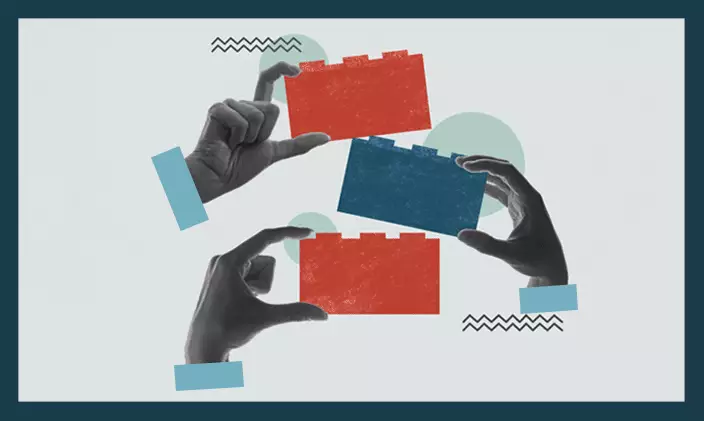What is the cognitivism learning theory?
This article was updated on April 8, 2024.

Written by Michael Feder

Reviewed by Pamela M. Roggeman, EdD, Dean,┬ĀCollege of Education

Whether teaching basic arithmetic to a grade school class or guiding graduate students through complex and advanced concepts, all educators have the same need:
They must understand┬Āhow┬Āstudents learn.
To answer this question, educators often use concepts derived from┬Āeducational learning theories. Combining classroom experience, teaching pedagogy and psychological concepts, educators can optimize the way they teach and apply the necessary principles for each group. For instance, principles of adult learning can help guide professors, while other learning theories may be better suited for elementary learners.
Cognitivism, as a learning theory, reflects how a person receives, organizes, stores and retrieves information. Cognitive learning has applications for teaching young students and adult learners picking up new skills on the job.
For educators, understanding cognitivism can help them effectively plan curriculum and instruction. For everyone else, the theoryŌĆÖs principles are helpful for understanding how the mind works and how to learn more effectively.
Basics of cognitivism
At the center of cognitivism sits the concept of┬Ācognition, which┬Ā┬Ādefines as┬ĀŌĆ£all conscious and unconscious processes by which knowledge is accumulated, such as perceiving, recognizing, conceiving and reasoning.ŌĆØ
ŌĆ£Knowledge,ŌĆØ as understood by cognitive theorists, is the cognitive processing of what something is and what something is not, from concepts as simple as a young student identifying animals from a picture book to something more complex such as weighing the pros and cons of eating meat.
▒╩▓§▓Ō│”│¾┤Ū▒¶┤Ū▓ĄŠ▒▓§│┘╠²┬Ādeveloped the first cognitive psychology theories in the 1930s from his work with infants and young children.┬ĀBehaviorism,┬Āwhich was the prevailing psychological theory at the time, focused solely on behaviors that could be observed externally. Behaviorists argued that this was a result of a subjectŌĆÖs interaction with external events and actions.
PiagetŌĆÖs work is also associated with┬Āthe┬Āconstructivist learning theory, which shares many concepts with cognitive learning. They both focus on the internal processes associated with learning and how individuals acquire knowledge, as opposed to outwardly observable behavior.
WhatŌĆÖs the difference between cognitivism and constructivism?
While constructivists emphasize learners actively participating in building knowledge, for cognitivists, active participation is not necessarily important.┬ĀMuch of┬Āthe knowledge-building process happens passively in the cognitivism theory, emphasizing processes like memory and perception. For constructivists, learners build their sense of understanding the world around them through social interactions and experiences. In practice, cognitivists are not as eager as to discard lectures and textbooks in favor of more participatory teaching methods. Both theories changed the way educators thought about learning environments and assessment strategies.┬Ā
Accommodation and assimilation in cognitive psychology
Accommodation is the act of taking existing ideas and concepts and crafting them into new and different ones. Assimilation is taking new ideas and concepts and using them alongside older ideas.
Piaget saw human development as a┬Āmultistage process of building knowledge. From their first breath, infants learn basic motor functions, like learning to grasp objects. By adulthood, these functions are essentially second nature and people can grapple with concepts that are very complex, like philosophy or mathematics.
To make a consistent psychological theory, Piaget sought to break knowledge (no matter how simple or complex) into a single, basic unit. From there, he could develop a theory of cognitive learning that could apply just as much to a babyŌĆÖs first step to deep philosophical concepts they might develop later in life. Piaget called this basic unit┬Āschema.
What are schemata?
Piaget describes schema as ŌĆ£a cohesive, repeatable action sequence possessing component actions that are tightly interconnected and governed by a core meaning.ŌĆØ
LetŌĆÖs break this down with a simple example: A child recognizes a cow on a farm.
The ŌĆ£cohesive, repeatable actionŌĆØ is the childŌĆÖs recognition of the cow. It is repeatable in that that the child will continue to recognize it (and animals identical to it) as a cow.
This action of recognition can be broken down into its components: The child doesnŌĆÖt just see a cow. They see a thing that is alive, has four legs, is eating grass and moos. These acts of recognition, of course, can be broken down further. The child must have some concept of what a live thing is, how to count to four and so on.
For the child, these observations form the ŌĆ£core meaningŌĆØ of a cow. From PiagetŌĆÖs perspective, the child will continue to have an enduring cognitive schema and idea of what a cow looks like in comparison to other animals.
That is a basic example, but Piaget argues that┬Āschemata essentially form the basis of every human cognitive process. According to Britannica, they are:┬Ā
- Perceiving
- Recognizing
- Conceiving
- Reasoning
Over the course of human development, people form new and more complex schemata, which build off other schemata. This is how we get from ideas as simple as recognizing a cow all the way to concepts as complex as, ŌĆ£Do cows recognize me?ŌĆØ
Another example: When a student learns about addition and subtraction, the
student is able to take that knowledge and use it to develop a budget
to save money for a new toy.
According to some cognitivists, schemata form the basis of those and all other concepts. How are schemata formed? Piaget outlines a┬Āfour-step process┬Āin the formation of schemata:
- Assimilation
- Disequilibrium
- Accommodation
- Equilibrium
Step 1: Assimilation
Assimilation is the cognitive process of associating new information to what is already known. This prior knowledge can be innate, like knowing how to breathe, or something learned previously.
Step 2: Disequilibrium
Disequilibrium refers to a state of discomfort that occurs when an individual encounters new information that does not fit into their existing schemata, or ways of understanding the world. In the example of a child learning what to associate with a cow, a child may see an animal with four legs and white fur that ŌĆ£baasŌĆØ and think it is a cow, when it is in fact a sheep.
Step 3: Accommodation
The child will attempt to resolve this disequilibrium through a process called ŌĆ£accommodation.ŌĆØ They will compare and contrast their concept of a cow with the mystery animal currently in front of them.
This might prompt the child to turn to a parent or caregiver, who will tell them that itŌĆÖs a sheep. Subconsciously, the child will do two things at this point, both of which are components of accommodation. First, they will adjust their existing cow-recognizing schema to be able to recognize cows as┬Ā▓į┤Ū│┘╠²sheep. Then they will produce a new schema to recognize sheep by their specific attributes, and not by the attributes of a cow.┬Ā┬Ā
Step 4: Equilibrium
By the end of this accommodation process, the child is equipped with a stable understanding of what a cow is and is not, as well as what a sheep is and is not. Upon seeing either of these animals, they will not need to readjust their schema.
That is, unless they encounter new information that causes disequilibrium and the whole process to begin again. In this way, schema-building is a constant, cyclical and lifelong process.┬Ā
Cognitivism in education┬Ā
Now that we know about cognitivism as a theory, we can look at cognitivism in education and how it applies to working with students. Cognitivism is applied in the classroom in many ways. From understanding how a particular student processes information, to helping students memorize key concepts, or even working on their problem-solving skills, there are several implications for educators. When educators take their studentsŌĆÖ existing knowledge into account, they can better support each studentŌĆÖs individual learning journey. In each application, the main principle is incorporating student experiences, perspectives and knowledge.
For example, a teacher might:
- Ask students about their experience with the lesson
- Emphasize the connection between past ideas and new ones
- Incorporate group discussions and Q&A sessions into the curriculum
- Invite a variety of opinions about a given subject
We spoke with Pamela Roggeman, EdD, dean of the College of Education at UOPX, to explain further what cognitivism in education might look like.
ŌĆ£An example of this with the early elementary grades is how teachers approach literature,ŌĆØ Dr. Roggeman says. ŌĆ£If a class is reading a selection, teachers will employ something called ŌĆśthink-alouds.ŌĆÖ A think-aloud is where the teacher models the process of asking herself questions and then directs students to do the same.
ŌĆ£So, for example, if the students are reading a story that involves an airplane, the teacher would stop and say, ŌĆśHmm, I was on an airplane once, and it was loud, and it made my tummy feel funny.ŌĆÖ Then, she will ask students to share their experiences. While reading the piece, she will stop and ask herself and then her students more questions about what they are learning from the piece. And finally, afterward, she might ask students to turn to their partners and talk about what they learned that they didnŌĆÖt know before.ŌĆØ
This approach can not only help students learn, but it can also help them feel respected, seen and heard. That can make class more exciting and encourage a passion for learning that continues throughout studentsŌĆÖ lives. Ultimately, cognitivism helps educators incorporate strategies that align with how young people learn by being aware of the mental processes that need to take place for those ŌĆ£ahaŌĆØ moments to occur.┬Ā
Cognitive learning theory at UOPX┬Ā
At ░«╬█┤½├Į, our instructors and educators are prepared to teach you about a variety of learning theories that can help you be successful in the classroom and positively influence the lives of both young and adult learners.
Dr. Roggeman shares: ŌĆ£In education, we talk about this concept by using the term ŌĆśmeta-cognition,ŌĆÖ ┬Āmeaning that we teach students how to notice their thoughts and feelings about learning in order to help students identify their thoughts, feelings and needs about what they are learning [as in the think-aloud example].ŌĆØ
Whether youŌĆÖve known for a while that working in education is for you or youŌĆÖve just discovered this, our instructors are ready to meet you where you are. Our classes can help you develop your teaching philosophy and grow into the role.┬Ā┬Ā
Learn more about our education degrees in early childhood education or our advanced degrees in curriculum and instruction.
- Post-MasterŌĆÖs Certificate in Education Technology: In this program, students explore topics in technology, curriculum design and instructional leadership to inform change within organizations. They also evaluate various media and technology to determine implementation and integration into learning organizations.
- Post-MasterŌĆÖs Certificate in Curriculum and Instruction: This program equips students with skills to lead the creation of educational coursework, instructional techniques and student assessments. Students learn to create models for instruction and delivery using foundational theories of curriculum design as well as evaluate the tools necessary to inform decisions and lead curriculum changes.
- Master of Arts in Education/Curriculum and Instruction: In this master's in curriculum and instruction online, students learn to synthesize multiple theories of curriculum and instruction to serve as leaders in these areas within a school or school district, analyze assessment data to make informed decisions for continuous improvement of instructional programs, and create innovative strategies and incorporate technology to enhance student learning.

ABOUT THE AUTHOR
A graduate of Johns Hopkins University and its Writing Seminars program and winner of the Stephen A. Dixon Literary Prize, Michael Feder brings an eye for detail and a passion for research to every article he writes. His academic and professional background includes experience in marketing, content development, script writing and SEO. Today, he works as a multimedia specialist at ░«╬█┤½├Į where he covers a variety of topics ranging from healthcare to IT.

ABOUT THE REVIEWER
As dean of the ░«╬█┤½├Į College of Education,┬ĀPamela Roggeman has spent over a decade in higher education teacher preparation in both the public and private sector. Her experience has included national partnerships that help to advance thought leadership in the field of education. Dr. Roggeman also serves as the President of the Arizona Educational FoundationŌĆÖs Board of Directors.
This article has been vetted by ░«╬█┤½├Į's editorial advisory committee.┬Ā
Read more about our editorial process.
Read more articles like this:



